
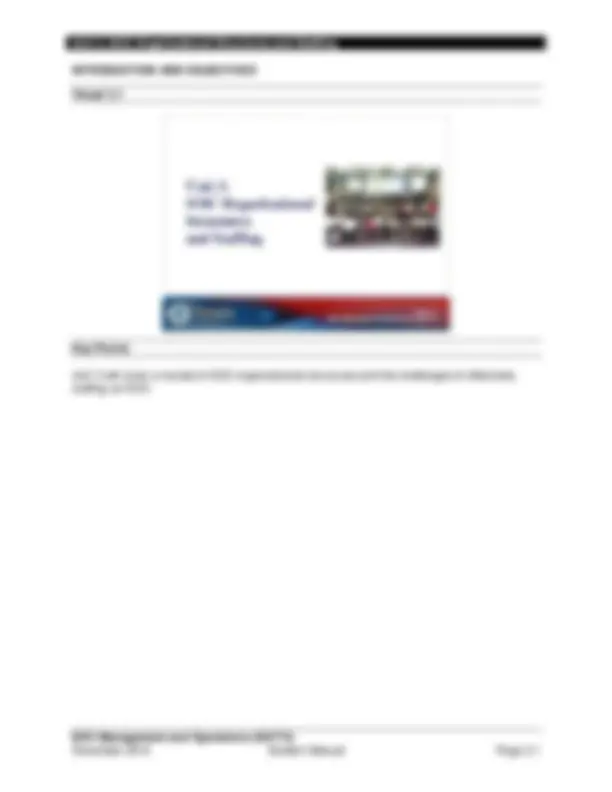
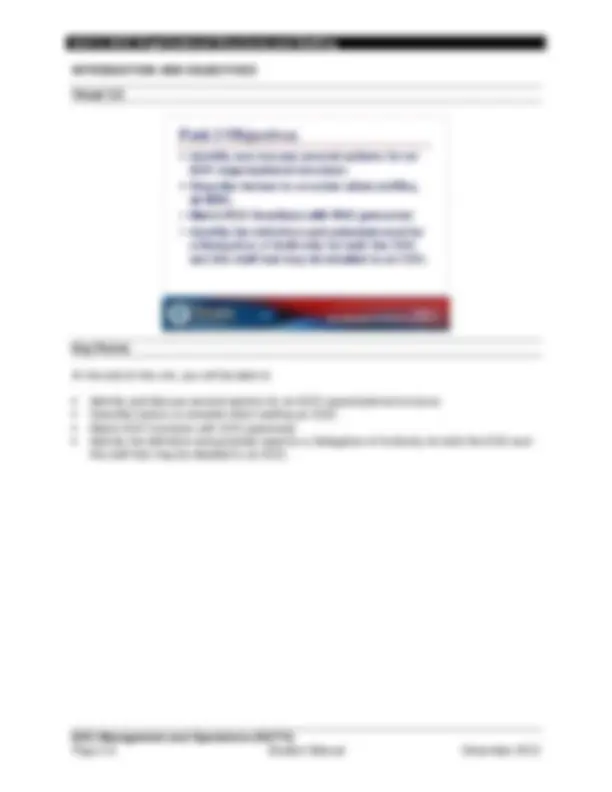
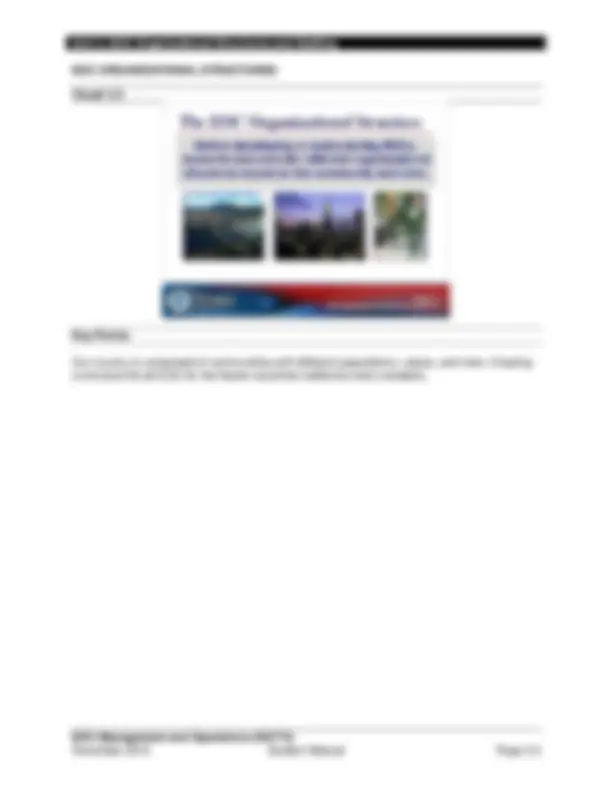
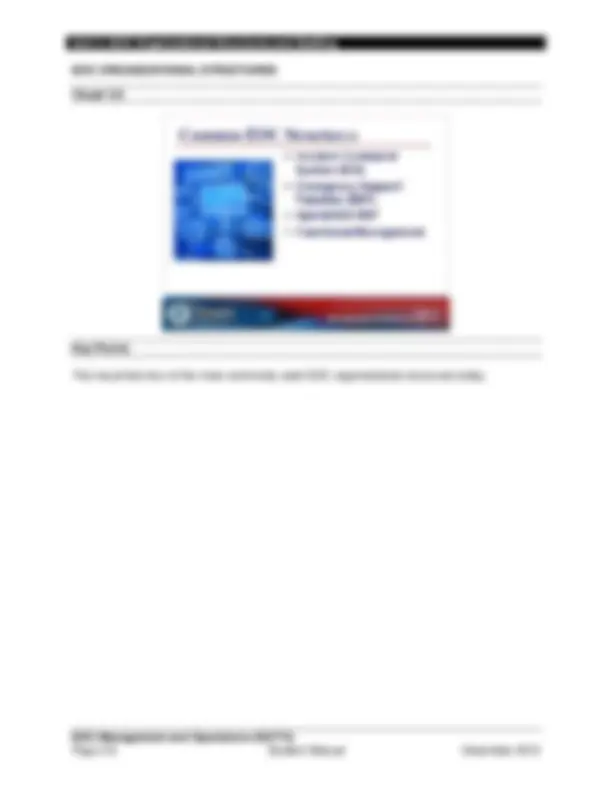

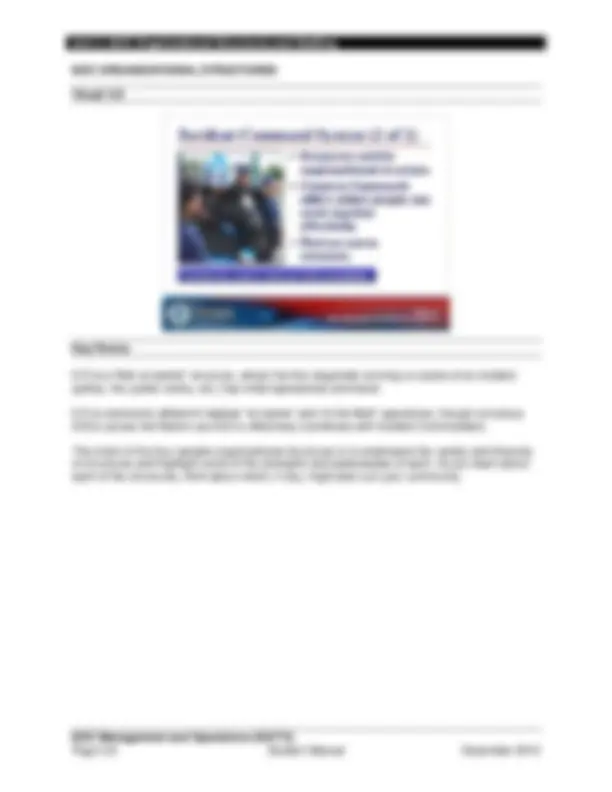
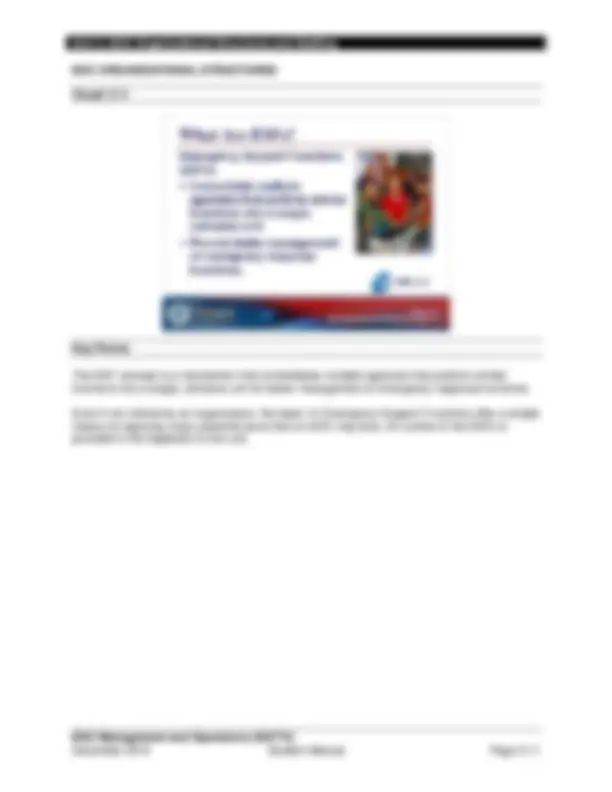
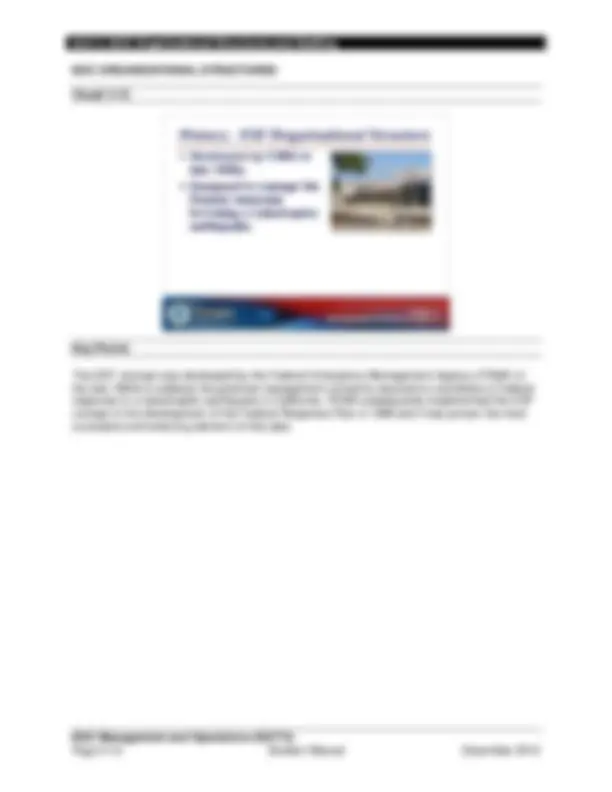
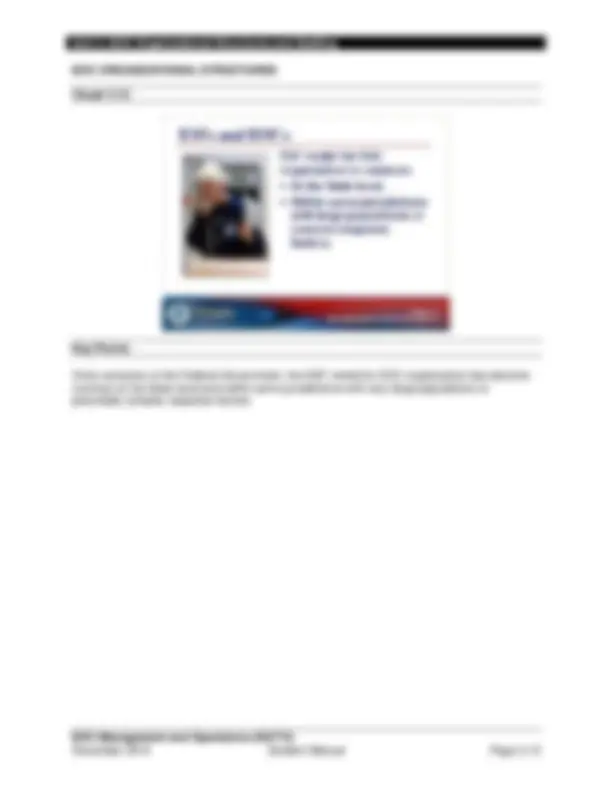
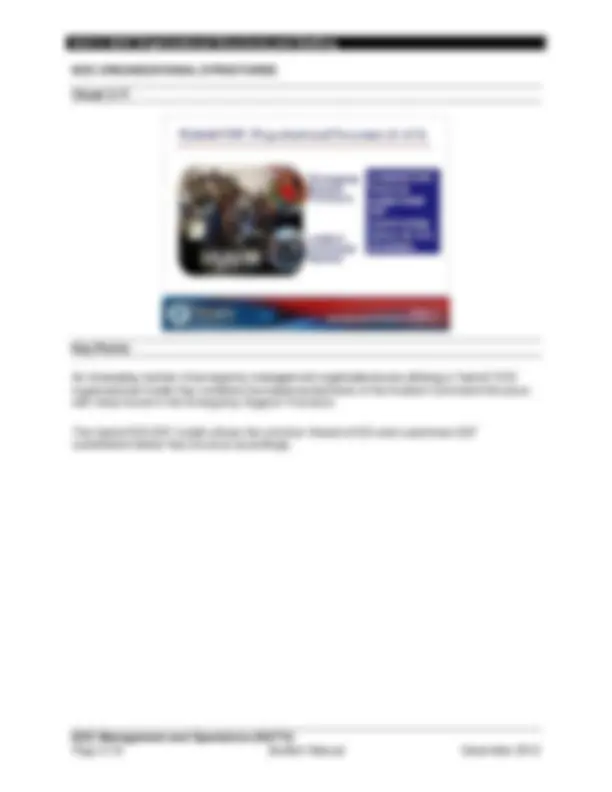
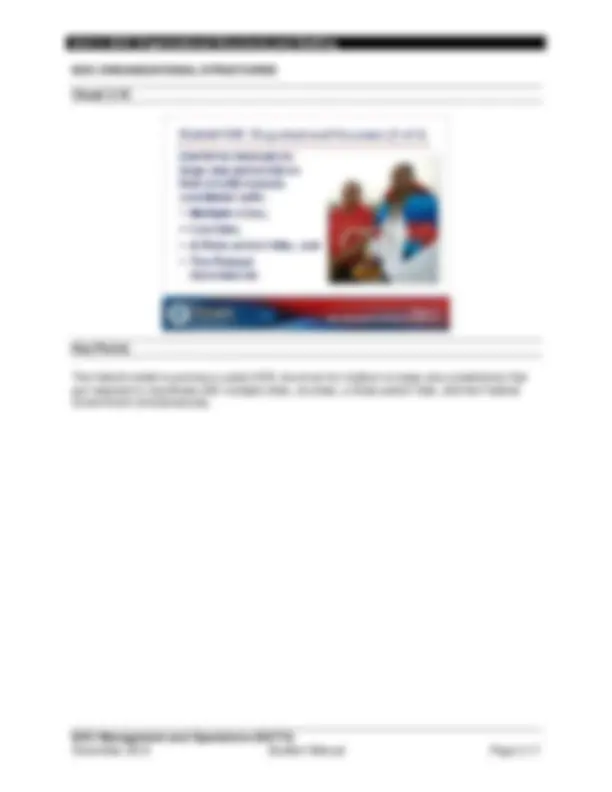
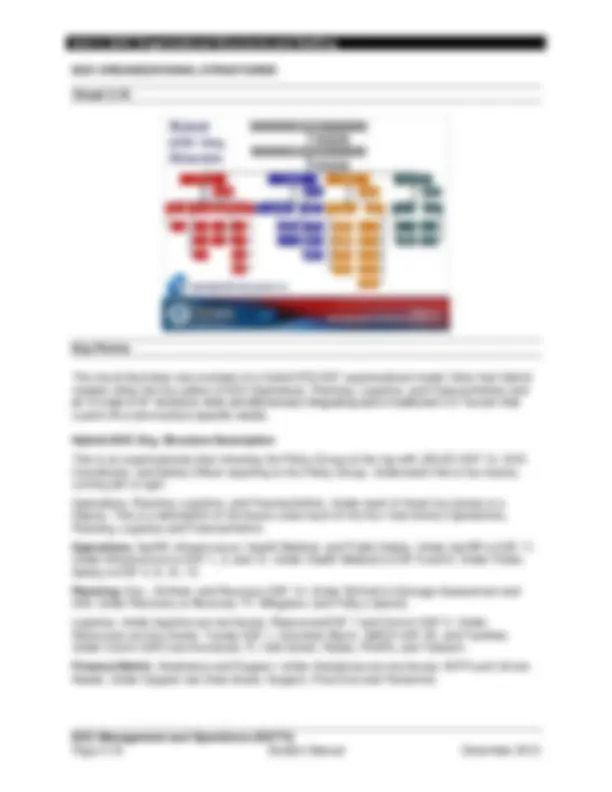
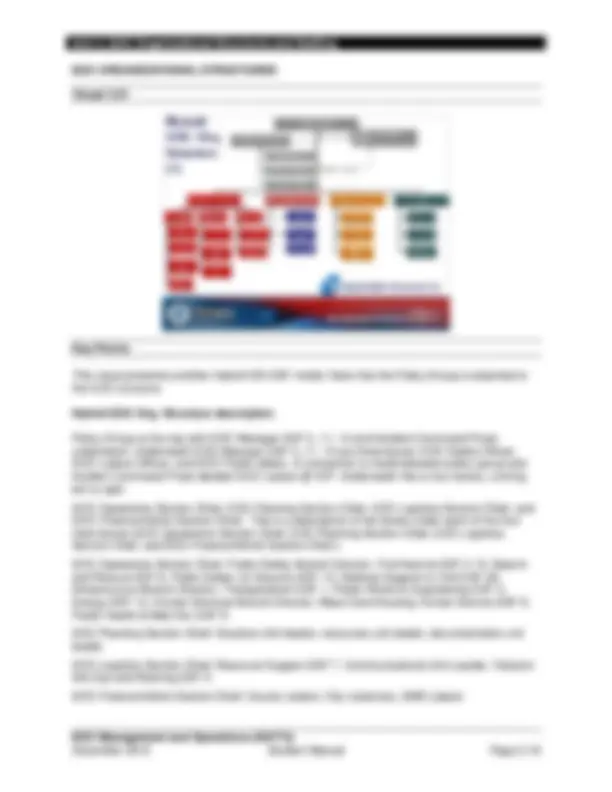
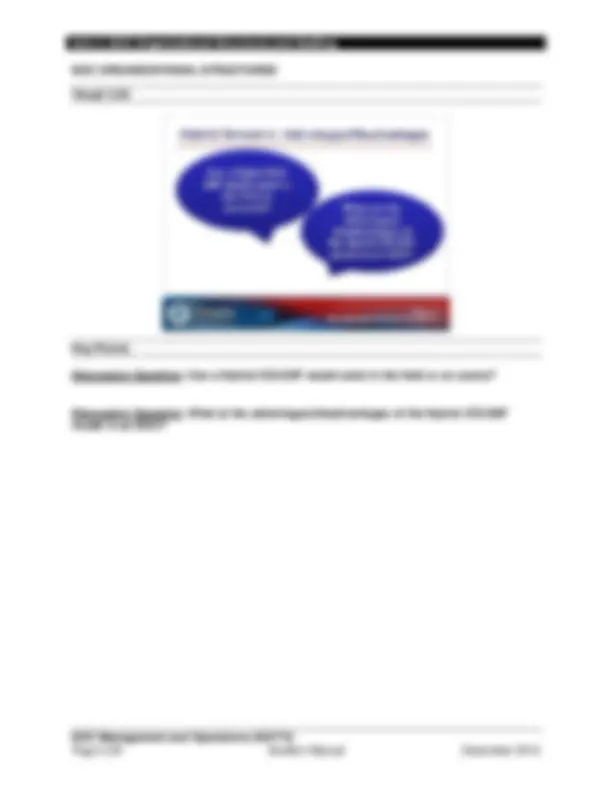
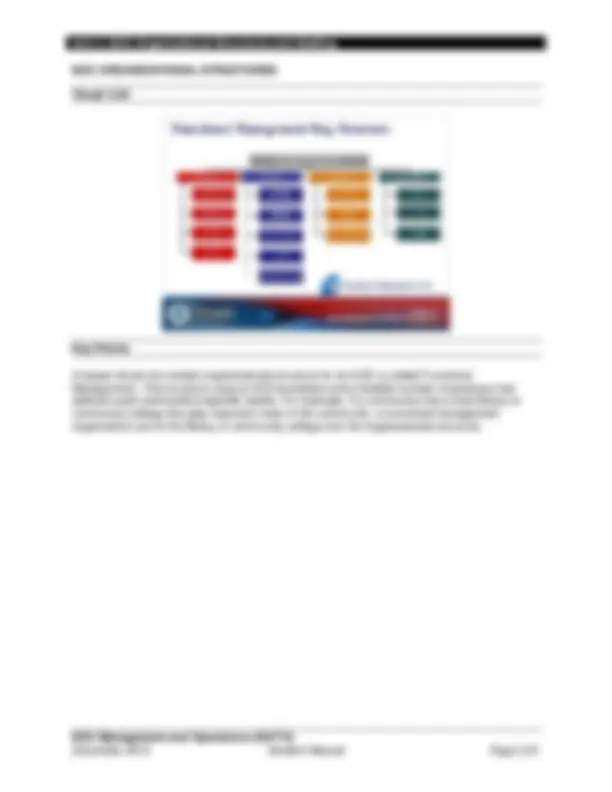
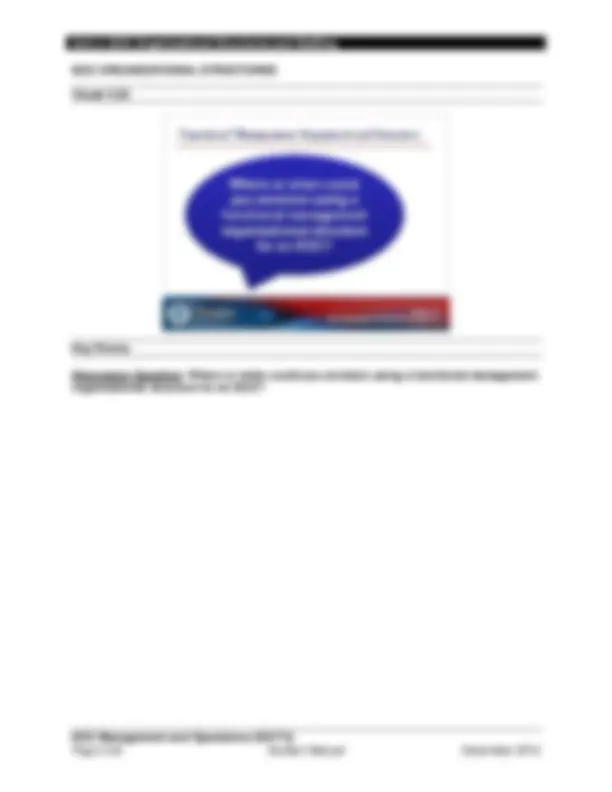
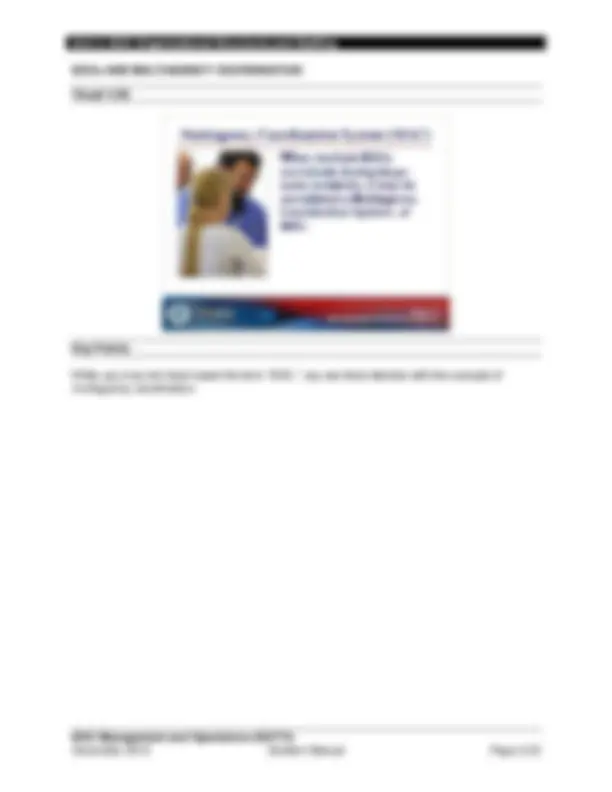
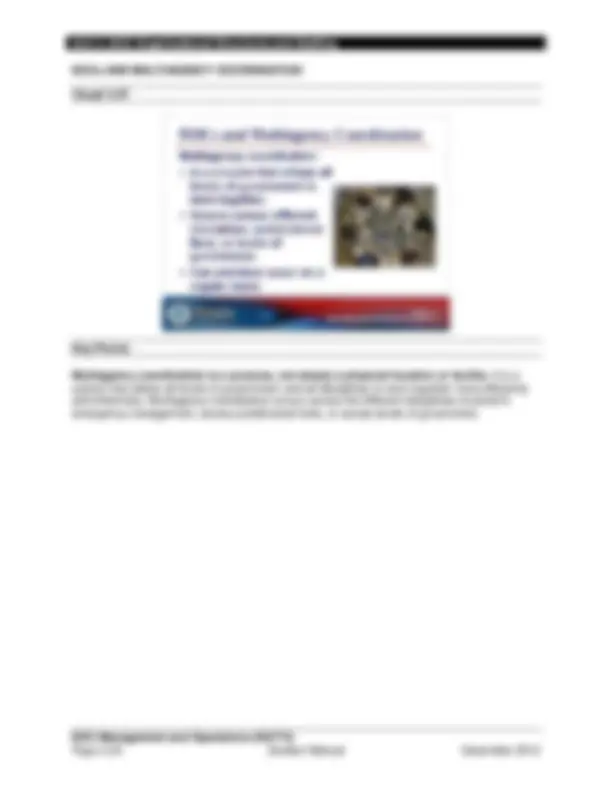
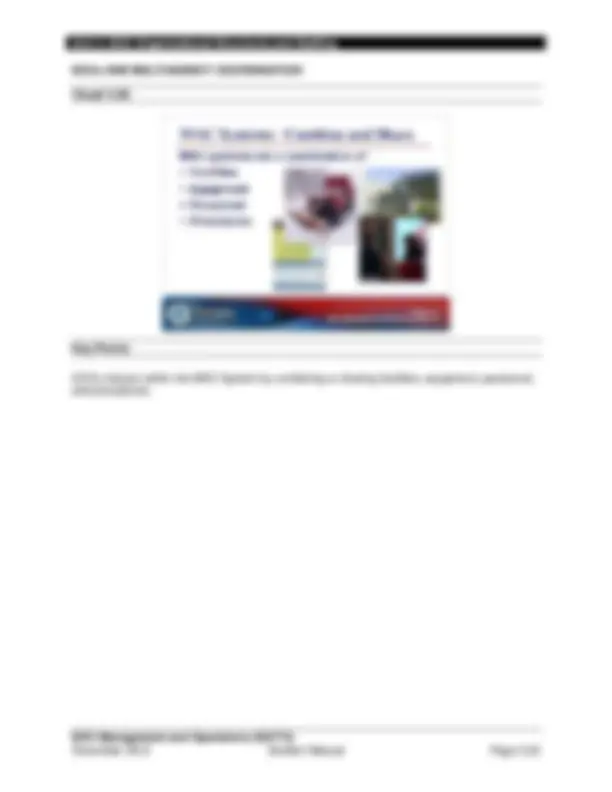
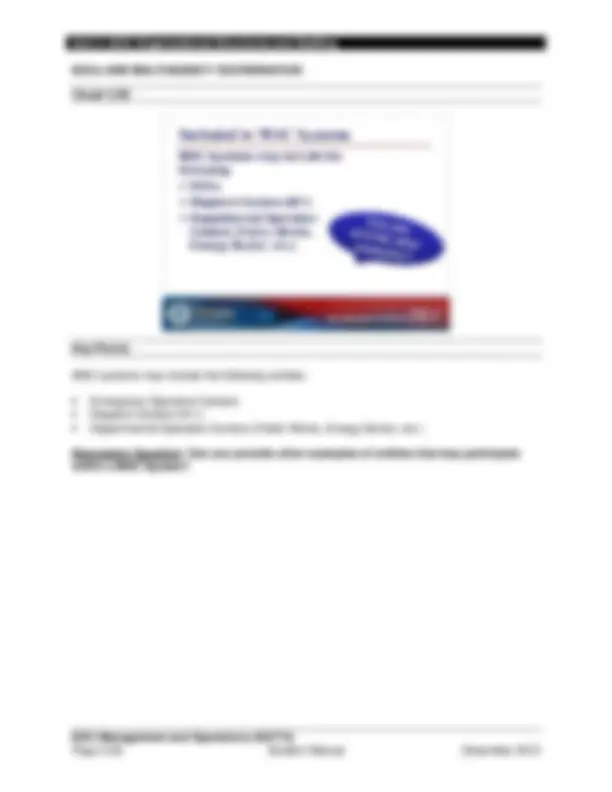
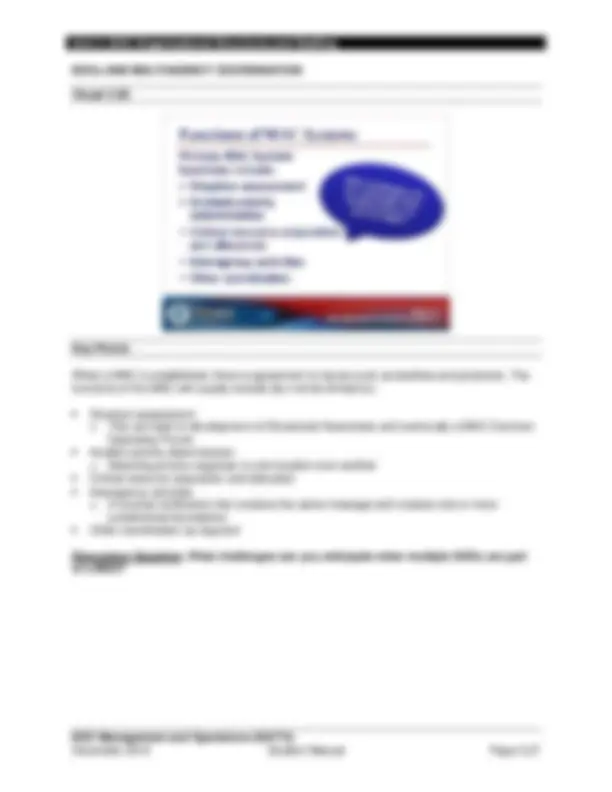
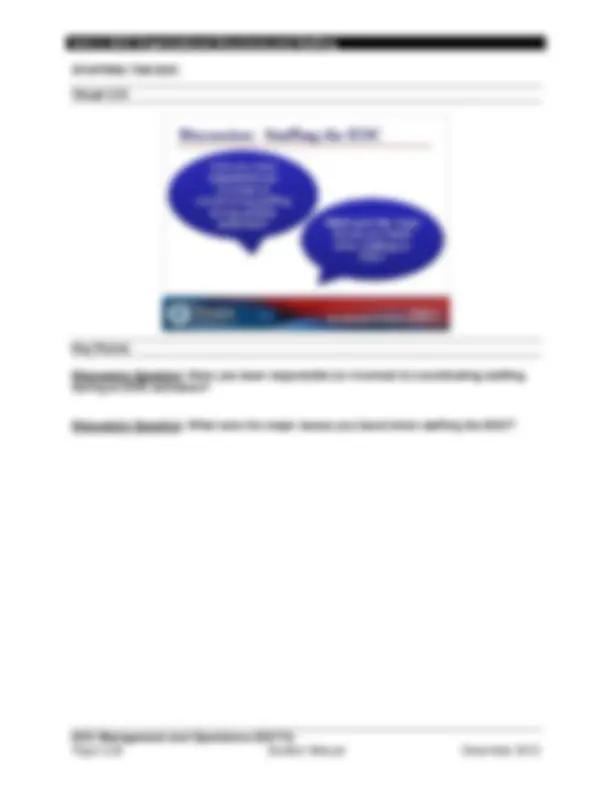
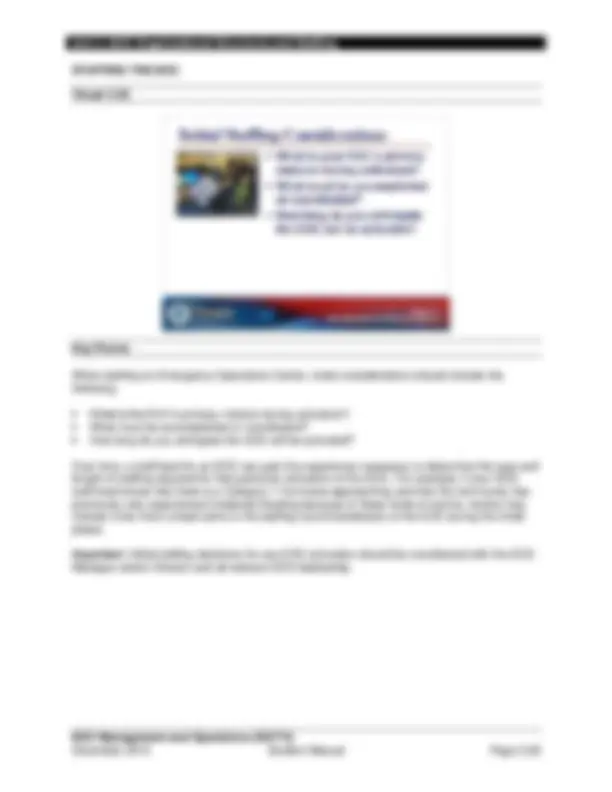
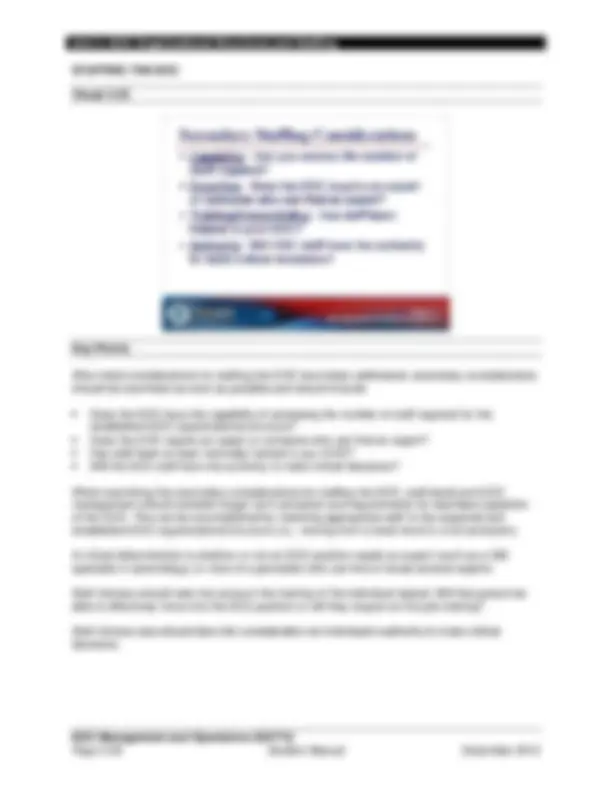
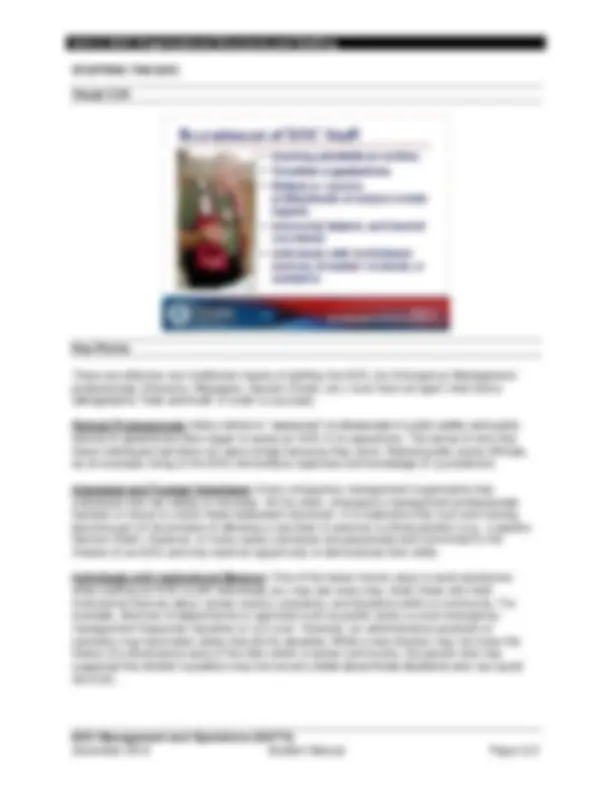
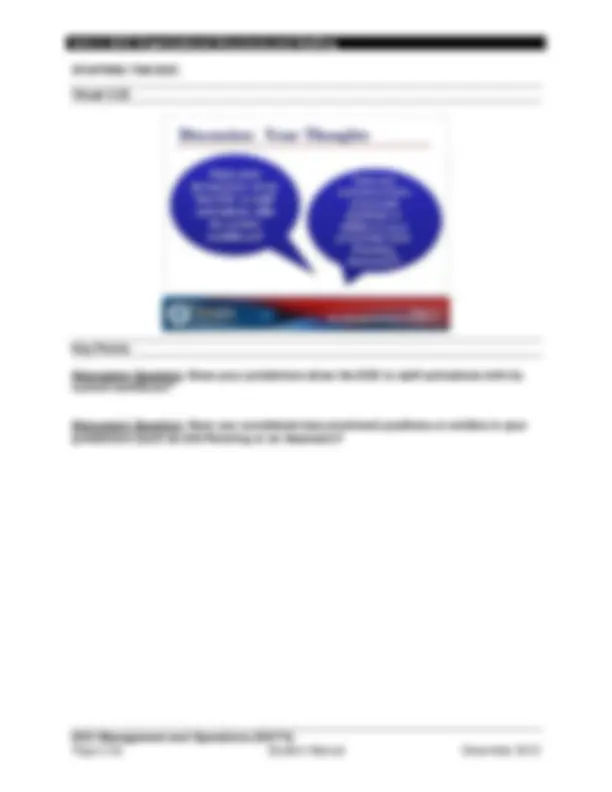
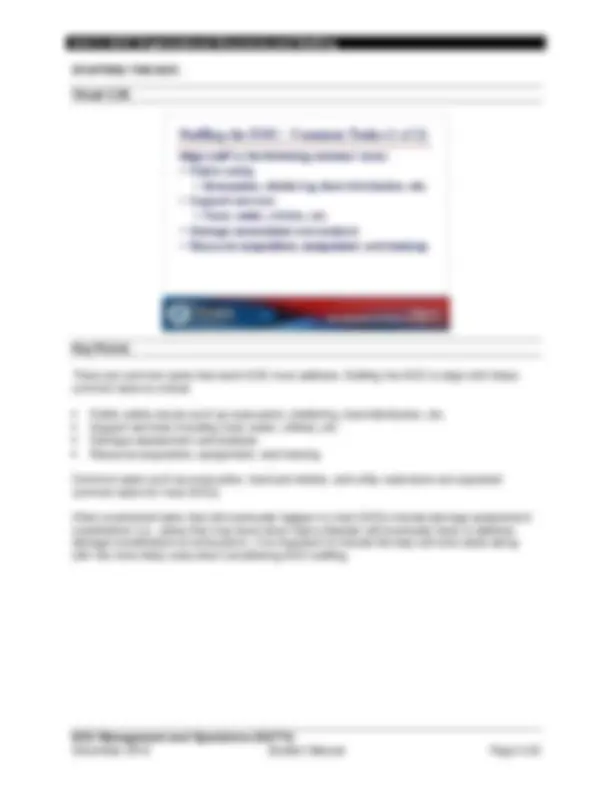
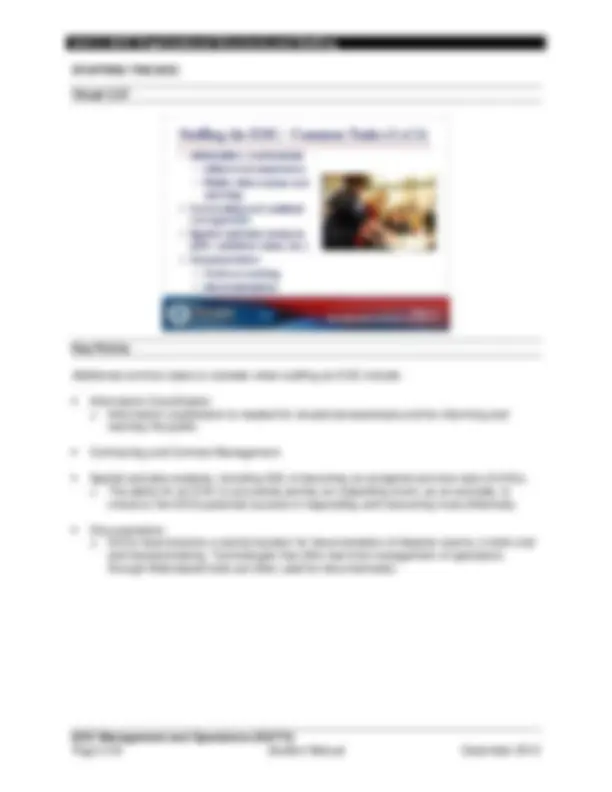
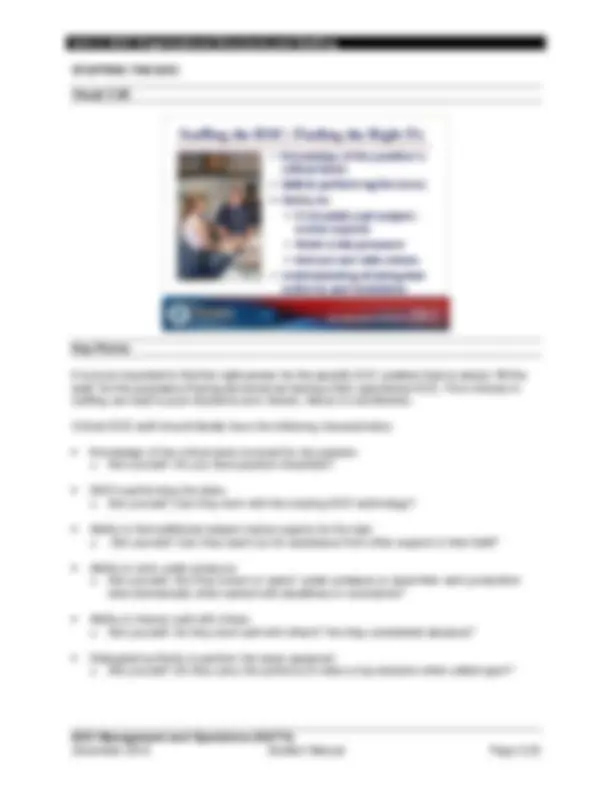
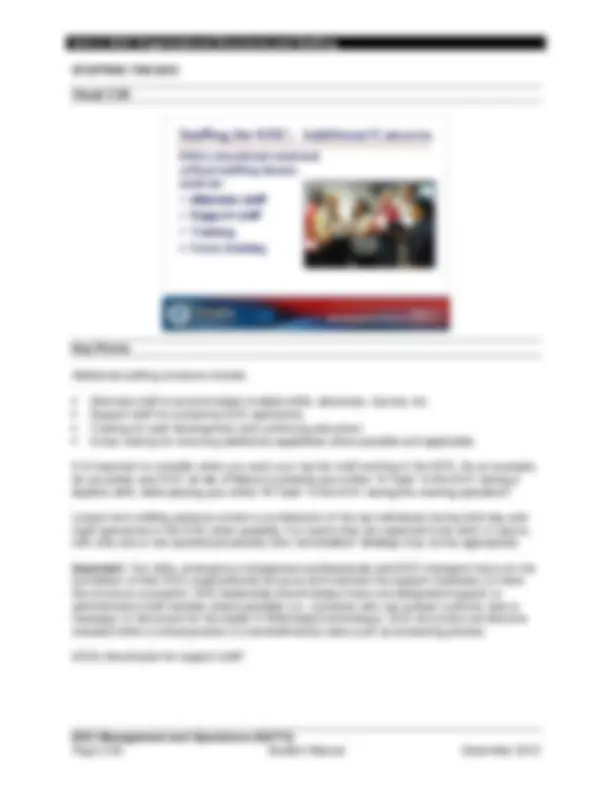
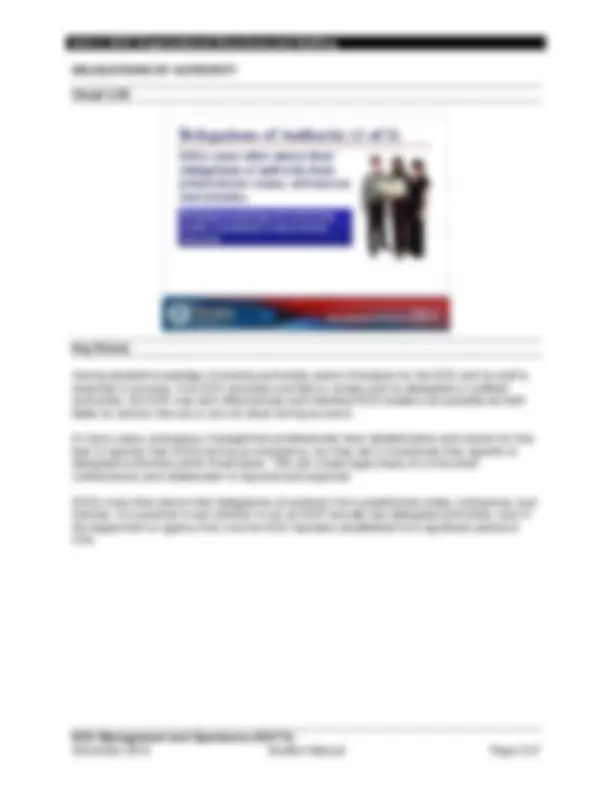
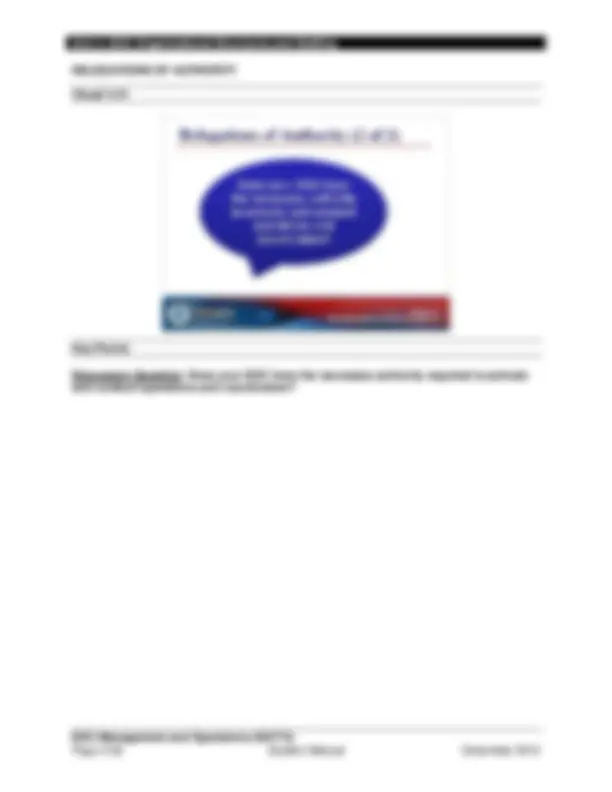
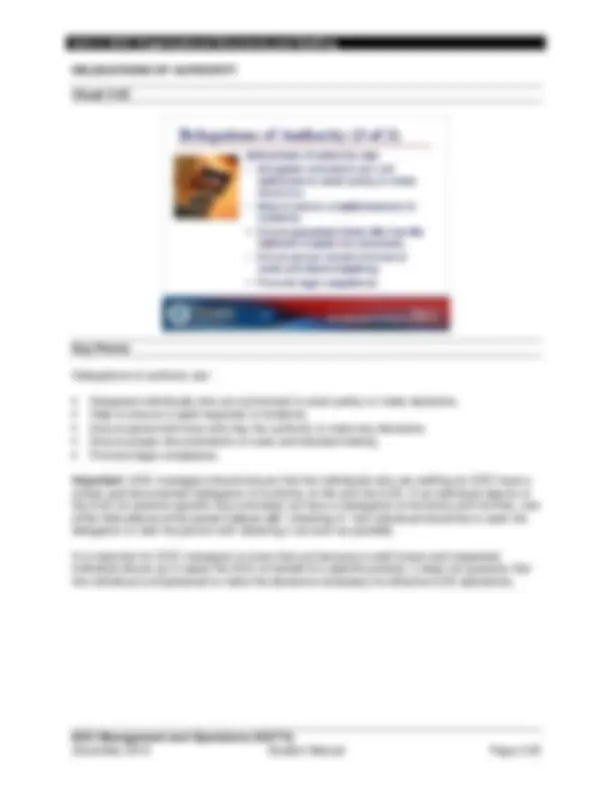
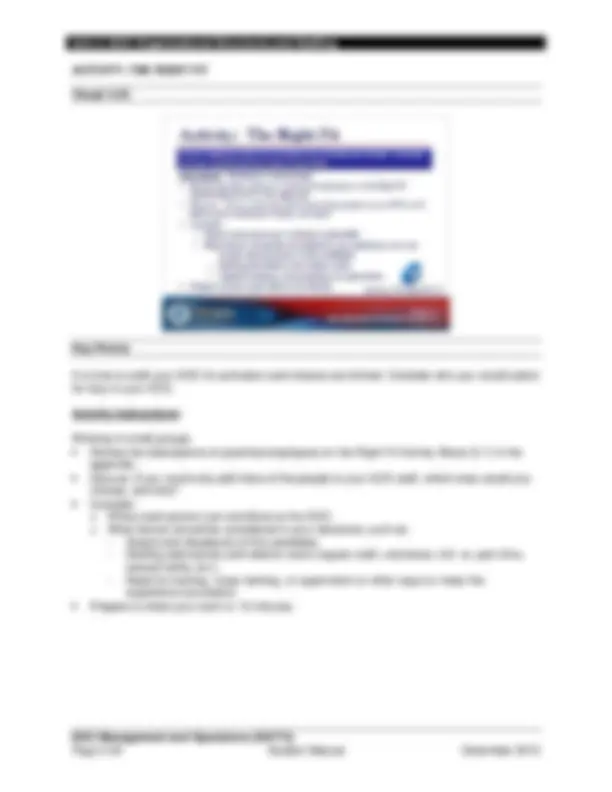
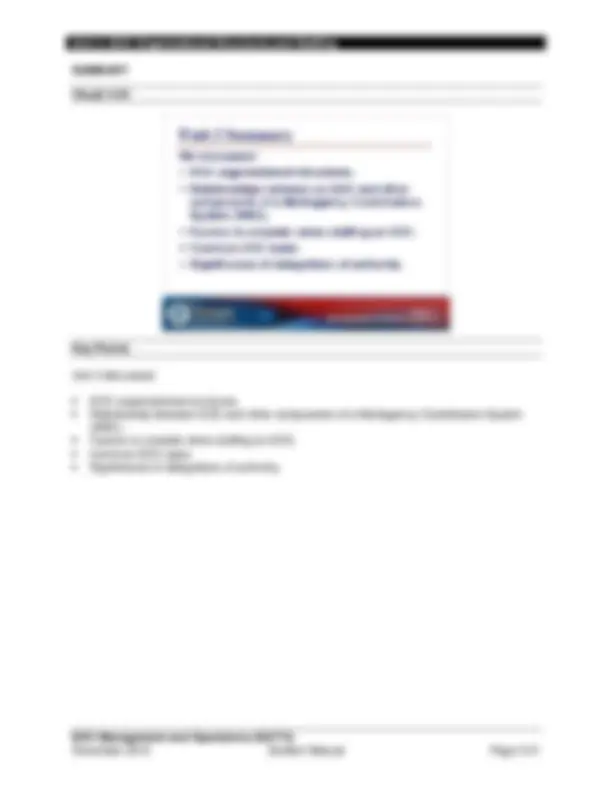



Study with the several resources on Docsity

Earn points by helping other students or get them with a premium plan


Prepare for your exams
Study with the several resources on Docsity

Earn points to download
Earn points by helping other students or get them with a premium plan
Community
Ask the community for help and clear up your study doubts
Discover the best universities in your country according to Docsity users
Free resources
Download our free guides on studying techniques, anxiety management strategies, and thesis advice from Docsity tutors
Identify and discuss several options for an EOC organizational structure. • Describe factors to consider when staffing an EOC. • Match EOC functions with ...
Typology: Study Guides, Projects, Research
1 / 44

This page cannot be seen from the preview
Don't miss anything!





































This page intentionally left blank.
EOC Management and Operations (G0775) Page 3.2 Student Manual December 2012
Visual 3.
Key Points
At the end of this unit, you will be able to:
Identify and discuss several options for an EOC organizational structure. Describe factors to consider when staffing an EOC. Match EOC functions with EOC personnel. Identify the definition and potential need for a Delegation of Authority for both the EOC and the staff that may be detailed to an EOC.
EOC Management and Operations (G0775) December 2012 Student Manual Page 3.
Visual 3.
Key Points
Our country is comprised of communities with different populations, values, and risks. Creating a one-size-fits-all EOC for the Nation would be ineffective and unrealistic.
EOC Management and Operations (G0775) December 2012 Student Manual Page 3.
Visual 3.
Key Points
The characteristics on this visual are not exclusive to EOCs—they apply to a host of organizations (public, private, or nonprofit).
Acquire, analyze, and act on information. Remain flexible in rapidly changing conditions. Anticipate change. Maintain public confidence. Maintain reliability.
EOC Management and Operations (G0775) Page 3.6 Student Manual December 2012
Visual 3.
Key Points
The visual lists four of the most commonly used EOC organizational structures today.
EOC Management and Operations (G0775) Page 3.8 Student Manual December 2012
Visual 3.
Key Points
ICS is a “first-on-scene” structure, where the first responder arriving on scene of an incident (police, fire, public works, etc.) has initial operational command.
ICS is commonly utilized in tactical “on scene” and “in the field” operations, though numerous EOCs across the Nation use ICS to effectively coordinate with Incident Commanders.
The intent of the four sample organizational structures is to emphasize the variety and diversity of structures and highlight some of the strengths and weaknesses of each. As you learn about each of the structures, think about which, if any, might best suit your community.
EOC Management and Operations (G0775) December 2012 Student Manual Page 3.
Visual 3.
Key Points
The visual presents a common example of an ICS structure, both in the field and within some Emergency Operations Centers. Note the simplicity of the structure and the standard four pillars of ICS: Operations, Planning, Logistics, and Finance/Administration.
EOC Management and Operations (G0775) December 2012 Student Manual Page 3.
Visual 3.
Key Points
The ESF concept is a mechanism that consolidates multiple agencies that perform similar functions into a single, cohesive unit for better management of emergency response functions.
Even if not utilized by an organization, the basic 15 Emergency Support Functions offer a simple means of capturing every potential issue that an EOC may face. An outline of the ESFs is provided in the Appendix to this unit.
EOC Management and Operations (G0775) Page 3.12 Student Manual December 2012
Visual 3.
Key Points
The ESF concept was developed by the Federal Emergency Management Agency (FEMA) in the late 1980s to address the potential management concerns required to coordinate a Federal response to a catastrophic earthquake in California. FEMA subsequently implemented the ESF concept in the development of the Federal Response Plan in 1988 and it has proven the most successful and enduring element of that plan.
EOC Management and Operations (G0775) Page 3.14 Student Manual December 2012
Visual 3.
Key Points
The visual presents an example of a traditional ESF organizational model from a FEMA Regional Office (Regional Response Coordination Center). The structure is simple but allows for the grouping of larger coordinated functions (transportation, communications, etc.).
This organizational structure is not commonly used in EOCs today, with notable exceptions being at the Federal level, some States, and within larger communities that can experience complex events impacting large populations.
ESF Organizational Structure description
The top box is RRCC Director/Deputy Director. Under that are two boxes:
Under these boxes are four boxes running left to right:
Operations: Under operations are Emergency Services Branch ESF 4,8,89,10, 13; Individual Assistance Branch ESF 6, 11, 14; Public Assistance Branch ESF 1, 2, 3, 12, 14; Defense Coordinating Unit; Mitigation
Planning: Under planning are the following boxes: Situation Status Unit ESF 15, Resource/Demob Unit ESF 7, Documentation Unit reports officer, Geo-Spatial Unit.
Logistics : Under Logistics are the following boxes: Coordination and Planning Unit, ESF 2, 7; Resources Management Unit, ESF 2, 7; Supply Unit, ESF 2, 7; Information Technology Unit, ESF 2.
Finance/Admin: Under this box, there are three boxes: Comptroller/Funds Control; Procurement Unit ESF 7; Human Resource Unit.
EOC Management and Operations (G0775) December 2012 Student Manual Page 3.
Visual 3.
Key Points
Discussion Question: Is it feasible to use the ESF structure in the field or on scene?
Discussion Question: What are the advantages/disadvantages of the ESF structure in an EOC?
EOC Management and Operations (G0775) December 2012 Student Manual Page 3.
Visual 3.1 8
Key Points
The Hybrid model is proving a useful EOC structure for medium-to-large size jurisdictions that are required to coordinate with multiple cities, counties, a State and/or tribe, and the Federal Government simultaneously.
EOC Management and Operations (G0775) Page 3.18 Student Manual December 2012
Visual 3.
Key Points
The visual illustrates one example of a Hybrid ICS-ESF organizational model. Note that Hybrid models utilize the four pillars of ICS (Operations, Planning, Logistics, and Finance/Admin) and all 15 basic ESF functions while simultaneously integrating some traditional ICS “boxes” that custom-fit a community’s specific needs.
Hybrid EOC Org. Structure Description
This is an organizational chart showing the Policy Group at the top with JIS/JIC-ESF 15, EOC Coordinator, and Safety Officer reporting to the Policy Group. Underneath this is four boxes, running left to right:
Operations, Planning, Logistics, and Finance/Admin. Under each of those four boxes is a Deputy. This is a description of the boxes under each of the four main boxes (Operations, Planning, Logistics and Finance/Admin.
Operations: Ag/NR, Infrastructure, Health Medical, and Public Safety. Under Ag/NR is ESF 11. Under Infrastructure is ESF 1, 3, and 12. Under Health Medical is ESF 6 and 8. Under Public Safety is ESF 4, 9, 10, 13.
Planning: Doc., Sit/Intel, and Recovery ESF 14. Under Sit/Intel is Damage Assessment and GIS. Under Recovery is Recovery TF, Mitigation, and Policy Liaisons.
Logistics. Under logistics are two boxes: Resources/ESF 7 and Comm/ ESF 2. Under Resources are four boxes: Transp ESF 1, Volunteer Mgmt., MSCA ESF 20, and Facilities. Under Comm ESF2 are five boxes: IT, Call Center, Races, PSAPs, and Telecom.
Finance/Admin: Assistance and Support. Under Assistance are two boxes: IA/PA and Unmet Needs. Under Support are three boxes: Support, Proc/Cost and Personnel.